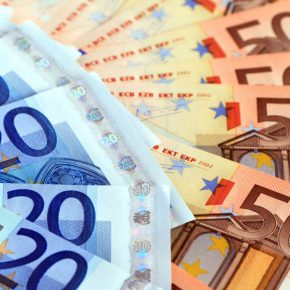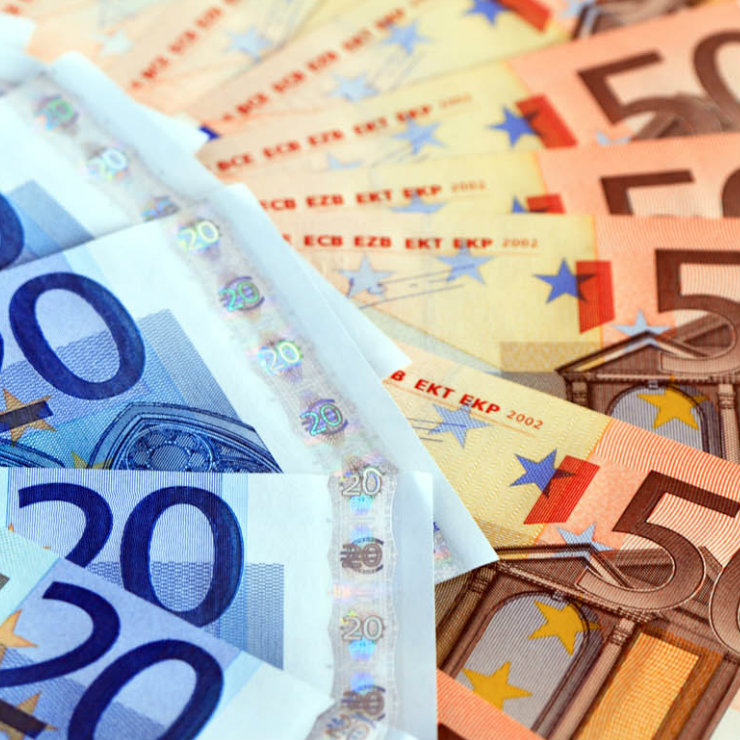
“A new Eurozone crisis cannot be ruled out,” economists from the Vienna Institute for International Economic Studies (wiiw) said last November. Politics is of course a key issue, with European elections in May, but the Eurozone also faces structural, some say existential, questions. Perhaps the key is monetary union without a fiscal one , given that the business cycles of Eurozone countries are still largely uncoordinated, which means when one economy is battling inflation, another could be struggling with stagnant growth, thus making solutions that benefit all problematic.
Add to this the shift toward banking union, a European Stability Mechanism, a Fiscal Compact and an enhanced role for the ECB shifting it from an inflation-fighting body into a US Federal Reserve-like dual mandate.
But there is no fiscal transfer system and, given German skepticism, there won’t be in the foreseeable future. A study from the Centre for European Policy (CEP) in Freiburg showed that Germany has gained most from the introduction of the EUR, gaining almost EUR1.9 trillion between 1999 and 2017.
Polls since 2012 show only 35 per cent of Poles and 23 per cent of Czechs, on average, are eager to sign up. Among countries eligible for membership, only in Romania support surpasses 60 per cent.
The criteria
The convergence criteria, the Maastricht criteria, include price stability (average inflation over one year before the examination not more than 1.5 percentage points above the rate of the three best-performing EU countries), sound public finances (public deficit below 3 per cent of GDP, not under excessive deficit procedure at the time of examination), exchange rate stability (participation in the Exchange Rate Mechanism — ERM II — for two years without severe tensions) and durability of convergence (long-term interest rate not more than 2 percentage points above the rate of the three best-performing EU countries in terms of price stability). According to EU’s executive arm, Bulgaria currently fulfils three out of the four economic criteria, the Czech Republic 2/4, Croatia 3/4, Hungary 2/4 and Poland 2/4.
Already in the Eurozone — Baltics
Developments in the three Baltic countries — Estonia, Lithuania and Latvia — which maintained tightly managed exchange rates before entering the Eurozone between 2011, 2014 and 2015, were similar to developments in southern Eurozone members in the pre-crisis period. The economic contraction of the three Baltic countries after 2008 was much sharper than in southern Europe, but these countries were able to return to growth much faster, partly due to their higher level of microeconomic flexibility.
Already in the Eurozone — Slovakia and Slovenia
According to Bloomberg research, late joiners — Slovakia and Slovenia — were among the top achievers, largely because the EUR drastically reduced exchange-rate risks, enabling them to deepen trade relations in the bloc.
“Slovakia is a success story among the Eurozone’s ex-communist members. While borrowing costs didn’t have to fall, as some of its peers and consumers struggled with inflation after the swap, EUR adoption has been incredibly positive,” Michael Winfrey, Prague-based economy and government editor, said.
Slovakia had a floating exchange rate before entering the ERM, and within the ERM the value of the Slovak koruna appreciated sharply. The EUR conversion rate for Slovakia was fixed in the summer of 2008, when central European currencies were at record high levels relative to the EUR. A few months later, the collapse of Lehman Brothers in September 2008 resulted in a massive currency depreciation of the CZK, HUF and the PLN, but not the Slovak koruna.
“For a country that spent EUR3.2bn bailing out banks just a few years ago, it seems surprising that Eurozone membership has been a good thing for Slovenia. But ditching its post-Yugoslav tolar brought credibility and made doing business a lot easier,” Gordana Filipovic, a Belgrade-based reporter, said.
On the fence — Poland
Poland is not a member of the Eurozone and is not a participant of ERM II, but since joining EU in 2004 it has an open-ended obligation to change this. Poland won’t adopt the EUR before its wealth reaches the level of Germany, ruling party Chairman Jarosław Kaczyński said recently, while PM Mateusz Morawiecki has said that for Poland to be able to consider joining the Eurozone, its GDP per capita should be at the level of 80-85 per cent of Germany’s. At purchasing power parity, per capita GDP stands at 88 per cent of the EU average in the Czech Republic, 77 per cent in Slovakia, 68 per cent in Poland, and 67 per cent in Hungary.
On the fence — Hungary
Another candidate for the EUR adoption is Hungary. At the moment, Hungary is using the HUF as its currency. Like Poland and Sweden, HUF is not pegged to EUR and is floating freely.
Initially, Hungary was willing to replace the HUF with the EUR in 2010, but it could not meet the necessary convergence criteria for ERM II, with high public debt, inflation, and budget deficit. Thus, the target date for the EUR adoption was postponed indefinitely. Prime minister Viktor Orban is reluctant about adopting the EUR. Last year, Mr. Orbán, called two-speed Europe “one of the most abhorrent ideas.”
Yet, if the political agenda in Hungary changes, possibly due to the next parliamentary elections in 2022, it may signal positive news for the subsequent the EUR adoption. Until then, we envision 2027 to be the date when Hungary may replace the HUF with the EUR.
On the fence — Czech Republic
The Czech Republic is using its national currency, the CZK, which is not pegged to the EUR. Likewise, the country is not a member of ERM II and does not plan to join the framework any time soon. The Czech Republic is well-positioned for EUR adoption. Both the government and people are not in favor of replacing the CZK with the EUR, which can be traced to the European debt crisis as the reference to Eurozone instability.
In 2017, the newly elected government with the prime minister Andrej Babis emphasized that they have no intentions to proceed with adopting the EUR nor joining ERM II. The Czech economy is buoyant, and GDP continues to grow by several percentage points per year.
On the fence — Bulgaria
Perhaps one of the countries closest to adopting the EUR is Bulgaria. The country joined EU in 2007, while its currency, the BGN, has been pegged to the EUR since the single currency inception in 1999. Interest rates and inflation are at the level of 1.4 per cent, which meets ERM criteria.
Recently, Bulgaria expressed its willingness to adopt the EUR and the European Union backed the initiative. Finance minister Vladislav Goranov and the central bank’s governor Dimitar Radev announced that they anticipate July 2019 to be the date of ERM II participation, while also joining the banking union.
Bulgaria has pegged its currency to the EUR for the past 20 years, meaning that it formally qualifies to participate in the EU’s fixed currency exchange system under the conditions defined in the Treaty of Lisbon. The agreement between Bulgaria and the Eurozone stipulates additional conditions that go beyond the treaty. One is stress tests on Bulgarian banks to be conducted by the ECB.
Bulgaria also accumulated a large current account deficit before 2008, though it was mostly financed by foreign direct investment and not by loans, as in southern Europe. Despite the fixed exchange rate, Bulgaria had a relatively mild recession after 2008 and recorded faster growth between 2009 and 2016 than the floating-rate Czech Republic and Hungary. The Bulgarian growth performance is especially remarkable, since Bulgaria had to manage a major macroeconomic adjustment by reducing the current account deficit (24 per cent of GDP in 2007) to a surplus in recent years.
Bulgaria can join the Eurozone in 2022 if the country gets the green light to enter the Exchange Rate Mechanism (ERM II) later this year, European Commission Vice President Valdis Dombrovskis told public radio BNR in January. However, the EU has demanded that Bulgaria also check its banking system due to suspicions that some locally-owned banks are not stable enough.
The ECB has already started a comprehensive analysis of six Bulgarian banks as part of the procedure for the country’s entry to the banking union. The analysis will include the three biggest banks in the country in terms of assets and three other domestically-owned banks. The test results will be announced in July 2019.
On the fence — Croatia
The latest country that joined the European Union is Croatia, which entered the bloc in 2013. Although the state is not using the EUR at the moment, it has intentions to do so in the future. Moreover, the national currency, the HRK, has been closely following the EUR, as envisioned by Croatian National Bank policy. Inflation and interest rates are 2.1 per cent and 2.5 per cent respectively.
The government has been considering the EUR adoption upon 2-3 years after joining the EU. Yet, the economic situation within the country did not really position Croatia towards entirely meeting the ERM II criteria. However, according to Croatian PM Andrej Plenkovic, the country wants to join the Eurozone in 2023-2025. Meantime according to the latest poll by Promocija Plus 53.4% of Croats oppose to the EUR introduction, while only 39.3% support joining the Eurozone.
On the fence — Romania
Romania is currently the least prepared European Union member state outside the Eurozone for adopting the EUR, fulfilling only one out of the four economic criteria, European Commission said in its latest Convergence Report: “Romania currently fulfils one out of the four economic criteria necessary for adopting the EUR: the criteria relating to public finances. Romania does not fulfil the price stability, exchange rate and long-term interest rate criteria and legislation in Romania is not fully compatible with the Treaty.”
As for Romania, the state is positive about possible the EUR adoption, once the country is able to meet the necessary criteria. Yet, before this important milestone is achieved, Romania will stick to its national currency — the RON. Unlike the BGN, the RON is not pegged to the EUR. The current inflation rate in Romania is 5 per cent, while the interest rate was set at 2.5 per cent. The ruling Romanian Party of Social Democrats announced that the plausible date of EUR adoption is 2024.
Countries that use the EUR unilaterally
Montenegro does not have the currency of its own. Before using the EUR, Montenegro used the Deutsche Mark as its currency. The country adopted the EUR in 2002, although that violates EU regulations. Nevertheless, EU officials did not try to prevent Montenegro from doing it. The inflation in the country is 1.9 per cent. Montenegro is not part of the European Union and the unilateral use of the EUR definitely decreases the chances of accession.
The second country in the CSE region is Kosovo. Even before declaring independence in 2008, Kosovo adopted the EUR in 2002 unilaterally. It did cooperate with the ECB and is not the member of the Eurozone. While the inflation rate in Kosovo is reportedly 1.5 per cent, there is no accessible information about interest rates.

